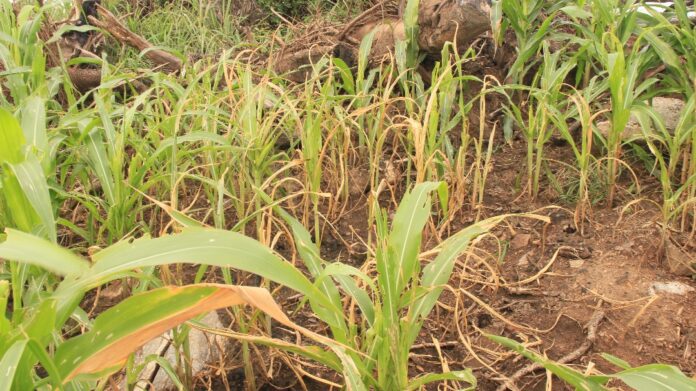UWR: Over 9,000 farmers affected by dry spell in Lambussie District
Out of a total of 28,980 hectares cultivated in the Lambussie District, 17,160 hectares are affected, raising concerns about potential food insecurity in the upcoming harvest season.
- Advertisement -
Some 9,855 farmers have been affected by this year’s dry spell at Lambussie in the Upper West Region.
Out of this, 5,255 are males whilst 4,600 are females who had their crops either fully or partly destroyed by the prolonged dry spell that affected Northern Ghana this season, leaving them with single option of counting their losses.
- Advertisement -
According to data available from the District Department of Agriculture, crops such as maize, rice, groundnut, yam, millet, and sorghum in the Lambussie District have been significantly impacted.
- Advertisement -
Out of a total of 28,980 hectares cultivated in the Lambussie District, 17,160 hectares are affected, raising concerns about potential food insecurity in the upcoming harvest season.
District Director of Agriculture, Nambie Nathaniel said the dry spell severely impacted crop germination across the district, with various crops recording germination rates as low as 20 to 50%.
He provided insight as follows.
| COMMODITIES | HECTAERS (ha) | TOTAL FARMERS AFFECTED | ||
|
Crop name |
Total area cultivated | Total area affected | Male | Female |
| Maize | 10,000 | 7,000 | 2000 | 500 |
| Rice | 900 | 200 | 150 | |
| Soyabean | 2,000 | 1,300 | 500 | 1050 |
| Groundnut | 6,000 | 2,000 | 800 | 2000 |
| Yam | 80 | 60 | 255 | — |
| Millet | 1,000 | 800 | 500 | 100 |
| Sorghum | 9,000 | 6,000 | 1000 | 800 |
| Totalities | ||||
Nambie Nathaniel added that “the major challenge facing farmers in the district is the absence of well-engineered irrigation infrastructure in the district to promote irrigation farming without solely relying on rain fed agriculture to produce food”.
- Advertisement -
On the trend of average yields this farm season, he gives an estimation as follows
| Commodities | 2020 | 2021 | 2022 | 2023 | Estimated 2024 |
| Maize | 3 Tons/Hec | 3 Tons/Hec | 3 Tons/Hec | 2.8 Tons/Hec | 1 Ton/Hec |
| Rice | 6 Tons/Hec | 6 Tons/Hec | 6 Tons/Hec | 6 Tons/Hec | 4 Tons/Hec |
| Soybean | 1.5 Ton/Hec | 1.5 Ton/Hec | 1.5 Ton/Hec | 1.5 Ton/Hec | 1 Ton/Hec |
| Groundnut | 2.5 Ton/Hec | 2.5 Ton/Hec | 2.5 Ton/Hec | 2.5 Ton/Hec | 1.5 Ton/Hec |
| Yam | 1.5 Ton/Hec | 1.5 Ton/Hec | 1.5 Ton/Hec | 1.5 Ton/Hec | 0.5 Ton/Hec |
| Millet | 0.9 Ton/Hec | 0.9 Ton/Hec | 0.9 Ton/Hec | 0.9 Ton/Hec | 0.6 Ton/Hec |
| Sorghum | 2 Ton/Hec | 2 Ton/Hec | 2 Ton/Hec | 2 Ton/Hec | 1 Ton/Hec |
The Deputy Director of the Centre for Indigenous Knowledge and Organizational Development (CIKOD), Daniel Banuoku, stated that the Upper West Region’s traditional agriculture practices are no longer sustainable under the new climate realities necessitating urgent adaptation measures.
“The Upper West Region since April 2024 has been significantly affected by drought exacerbated by climate change and variability. The region is particularly vulnerable due to its overreliance on rain-fed agriculture and its fragile ecosystem,” he added.
He disclosed that the drought has devastated more than 900,000 hectares of farmland, resulting in approximately GHC 3.5 billion in agricultural investment losses and potential revenue losses amounting to GHC 10 billion.
Daniel Banuoku therefore called for urgent action from the government, development partners, and civil society to support affected communities and promote sustainable agricultural practices.
In addition to the Lambussie District, other areas affected by the dry spell in the Upper West Region include Sissala East, Sissala West, Nandom, Wa East, and Lawra.
Source:onuaonline.com
- Advertisement -


